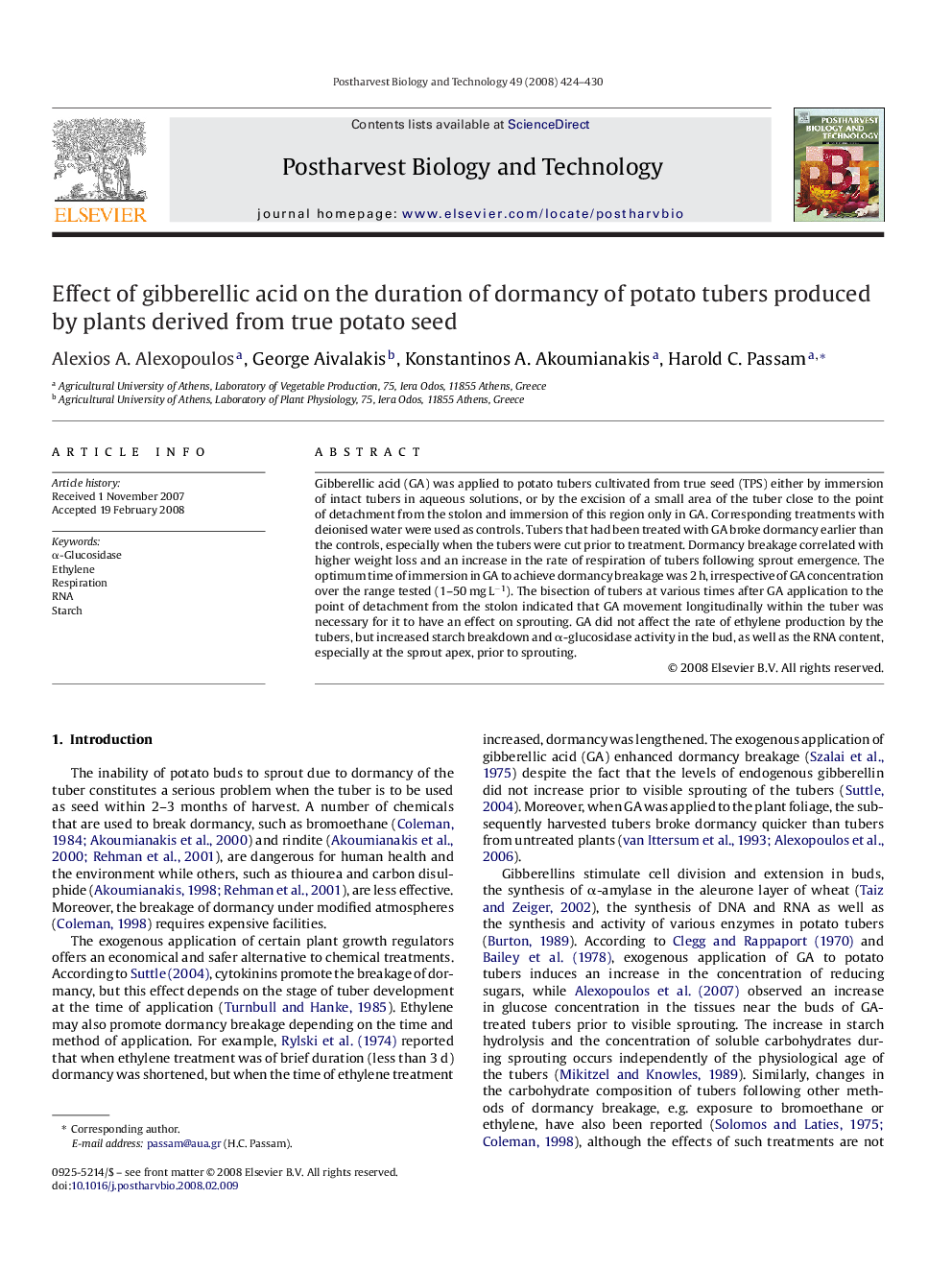| Article ID | Journal | Published Year | Pages | File Type |
|---|---|---|---|---|
| 4519422 | Postharvest Biology and Technology | 2008 | 7 Pages |
Gibberellic acid (GA) was applied to potato tubers cultivated from true seed (TPS) either by immersion of intact tubers in aqueous solutions, or by the excision of a small area of the tuber close to the point of detachment from the stolon and immersion of this region only in GA. Corresponding treatments with deionised water were used as controls. Tubers that had been treated with GA broke dormancy earlier than the controls, especially when the tubers were cut prior to treatment. Dormancy breakage correlated with higher weight loss and an increase in the rate of respiration of tubers following sprout emergence. The optimum time of immersion in GA to achieve dormancy breakage was 2 h, irrespective of GA concentration over the range tested (1–50 mg L−1). The bisection of tubers at various times after GA application to the point of detachment from the stolon indicated that GA movement longitudinally within the tuber was necessary for it to have an effect on sprouting. GA did not affect the rate of ethylene production by the tubers, but increased starch breakdown and α-glucosidase activity in the bud, as well as the RNA content, especially at the sprout apex, prior to sprouting.
